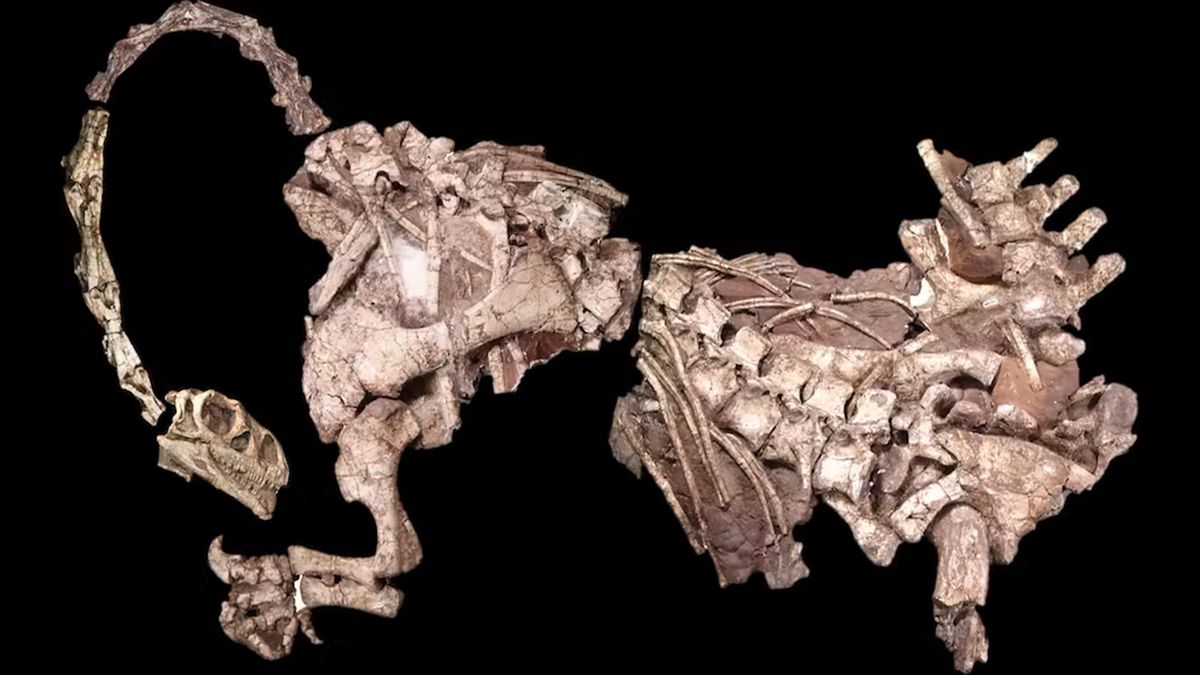Africans discovered dinosaur fossils long before the term 'paleontology' existed
Credit for discovering the first dinosaur bones usually goes to British gentlemen for their finds between the 17th and 19th centuries in England. Robert Plot, an English natural history scholar, was the first of these to describe a dinosaur bone, in his 1676 book The Natural History of Oxfordshire. Over the next two centuries dinosaur palaeontology would be dominated by numerous British natural scientists.
But our study shows that the history of palaeontology can be traced back much further into the past. We present evidence that the first dinosaur bone may have been discovered in Africa as early as 500 years before Plot's.
We're a team of scientists who study fossils in South Africa. Peering through the published and unpublished archaeological, historical and palaeontological literature, we discovered that there has been interest in fossils in Africa for as
long as there have been people on the continent.
This is not a surprise. Humankind originated in Africa: Homo sapiens has existed for at least 300,000 years. And the continent has a great diversity of rock outcrops, such as the Kem Kem beds in Morocco, the Fayum depression in Egypt, the Rift Valley in east Africa and the Karoo in southern Africa, containing fossils that have always been accessible to our ancestors.
So it wasn't just likely that African people discovered fossils first. It was inevitable.
More often than not, the first dinosaur fossils supposedly discovered by scientists were actually brought to their attention by local guides. Examples are the discovery of the gigantic dinosaurs Jobaria by the Tuaregs in Niger and Giraffatitan by the Mwera in Tanzania.
Our paper reviews what's known about African indigenous knowledge of fossils. We list fossils that appear to have long been known at various African sites, and discuss how they might have been used and interpreted by African communities before the science of palaeontology came to be.
One of the highlights of our paper is the archaeological site of Bolahla, a Later Stone Age rock shelter in Lesotho. Various dating techniques indicate that the site was occupied by the Khoesan and Basotho people from the 12th to 18th centuries (1100 to 1700 AD). The shelter itself is surrounded by hills made of consolidated sediments that were deposited under a harsh Sahara-like desert some 180 million to 200 million years ago, when the first dinosaurs roamed the Earth.
This part of Lesotho is particularly well known for delivering the species Massospondylus carinatus, a 4 to 6 meter, long-necked and small-headed dinosaur. Fossilized bones of Massospondylus are abundant in the area and were already so when the site was occupied by people in the Middle Ages.
In 1990, archaeologists working at Bolahla discovered that a finger bone of Massospondylus, a fossil phalanx, had been transported to the cave. There are no fossil skeletons sticking out the walls of the cave, so the only chance that this phalanx ended up there was that someone in the distant past picked it up and carried it to the cave. Perhaps this person did so out of simple curiosity, or to turn it into a pendant or toy, or to use it for traditional healing rituals.

 www.livescience.com
www.livescience.com
Credit for discovering the first dinosaur bones usually goes to British gentlemen for their finds between the 17th and 19th centuries in England. Robert Plot, an English natural history scholar, was the first of these to describe a dinosaur bone, in his 1676 book The Natural History of Oxfordshire. Over the next two centuries dinosaur palaeontology would be dominated by numerous British natural scientists.
But our study shows that the history of palaeontology can be traced back much further into the past. We present evidence that the first dinosaur bone may have been discovered in Africa as early as 500 years before Plot's.
We're a team of scientists who study fossils in South Africa. Peering through the published and unpublished archaeological, historical and palaeontological literature, we discovered that there has been interest in fossils in Africa for as
long as there have been people on the continent.
This is not a surprise. Humankind originated in Africa: Homo sapiens has existed for at least 300,000 years. And the continent has a great diversity of rock outcrops, such as the Kem Kem beds in Morocco, the Fayum depression in Egypt, the Rift Valley in east Africa and the Karoo in southern Africa, containing fossils that have always been accessible to our ancestors.
So it wasn't just likely that African people discovered fossils first. It was inevitable.
More often than not, the first dinosaur fossils supposedly discovered by scientists were actually brought to their attention by local guides. Examples are the discovery of the gigantic dinosaurs Jobaria by the Tuaregs in Niger and Giraffatitan by the Mwera in Tanzania.
Our paper reviews what's known about African indigenous knowledge of fossils. We list fossils that appear to have long been known at various African sites, and discuss how they might have been used and interpreted by African communities before the science of palaeontology came to be.
One of the highlights of our paper is the archaeological site of Bolahla, a Later Stone Age rock shelter in Lesotho. Various dating techniques indicate that the site was occupied by the Khoesan and Basotho people from the 12th to 18th centuries (1100 to 1700 AD). The shelter itself is surrounded by hills made of consolidated sediments that were deposited under a harsh Sahara-like desert some 180 million to 200 million years ago, when the first dinosaurs roamed the Earth.
This part of Lesotho is particularly well known for delivering the species Massospondylus carinatus, a 4 to 6 meter, long-necked and small-headed dinosaur. Fossilized bones of Massospondylus are abundant in the area and were already so when the site was occupied by people in the Middle Ages.
In 1990, archaeologists working at Bolahla discovered that a finger bone of Massospondylus, a fossil phalanx, had been transported to the cave. There are no fossil skeletons sticking out the walls of the cave, so the only chance that this phalanx ended up there was that someone in the distant past picked it up and carried it to the cave. Perhaps this person did so out of simple curiosity, or to turn it into a pendant or toy, or to use it for traditional healing rituals.

Dinosaur finger bone from Lesotho rock shelter suggests Africans discovered fossils centuries before British did
Africans discovered dinosaur fossils long before the term 'paleontology' existed



 Never, huh?
Never, huh?
